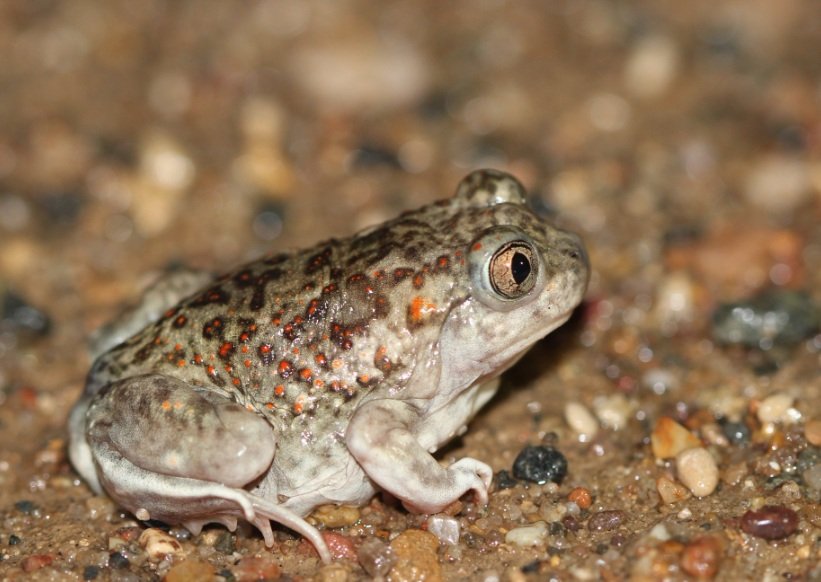
Intriguing facts about the spadefoot toad
The spadefoot The intriguing toad is a species of amphibian recognized for its distinct features and habits. This toad, which can be found in North America, Europe, and Asia, inhabits the globe. Its name derives from the morphology of its hind feet, which are designed to dig and resemble spades.
Adaptations for Dry Environments of Spadefoot Toads
The capacity of the spadefoot toad to live in dry areas is an intriguing feature. This toad, in contrast to many others, had the amazing capacity to aestivate—a kind of hibernation that occurs during hot and dry seasons. It buries itself under the surface and waits for more conducive circumstances to allow it to survive.
Unique Breeding Habits of Spadefoot Toads
The breeding habits of the spadefoot toad are another fascinating feature. Because of their unusual breeding method, these toads rely on the existence of transient pools of water. These ponds are created by heavy rains, and toads congregate there to mate and lay eggs. Before the temporary water supply evaporates, the tadpoles take advantage of it, hatching and growing quickly. Because of this adaptability, the spadefoot toad may effectively reproduce in dry and uncertain conditions.
Insights into Spadefoot Toads
An amazing amphibian that has evolved to live in dry and semi-arid conditions is the spadefoot toad. This fascinating organism’s nocturnal habits, distinct physical features, and unique adaptations make it possible to study. Gaining knowledge about the spadefoot toad allows us to recognize the variety and tenacity of the natural world.
Habitat and Distribution of Spadefoot Toads
Typically, the spadefoot toad inhabits dry and semi-arid environments, including scrublands, grasslands, and deserts. They are found in Asia, Europe, and North America and are highly suited to living in these severe settings.
Physical Characteristics of Spadefoot Toads
A characteristic that distinguishes spadefoot toads from other toads is a protrusion on their rear legs that resembles a spade. Their unique adaptability allows for rapid ground-burrowing. Their rough, warty skin serves as protection and concealment, and their robust bodies and short legs contribute to this.
Nocturnal Behavior of Spadefoot Toads
Spadefoot toads are typically nocturnal animals, so nighttime is when they are most active. To save energy and stay out of the sun, they spend their days hidden in burrows or underground. They come out at night to mate and go food hunting.
Dietary Preferences of Spadefoot Toads
The majority of the diverse food that spadefoot toads consume is made up of insects and other tiny invertebrates. Because they are opportunistic feeders, they will consume everything they can snag, including tiny amphibians, ants, spiders, and beetles. Their food is essential to preserving the equilibrium of the ecosystem in which they live.
Reproduction and Life Cycle of Spadefoot Toads
Spadefoot toads’ distinctive mating technique is strongly correlated with water. To deposit their eggs, they need ephemeral pools of water, such as seasonal ponds or puddles created by rain. These ponds may provide a secure environment for their tadpoles to grow. At breeding grounds, spadefoot toads congregate in great numbers when the circumstances are favorable. Males yell to entice females, and once a female chooses a mate, the male and female engage in amplexus, in which the male latches onto the female’s back. After the female lays its eggs, the male externally fertilizes them. After emerging from the eggs, tadpoles go through a quick stage of growth. Until they change into juvenile toads, they are fed on algae and other organic substances found in the water. Depending on the surroundings, the whole process from egg to adult can take a few weeks to several months.
 Survival Adaptations of Spadefoot Toads
Survival Adaptations of Spadefoot Toads
Spadefoot toads have developed a number of adaptations that help them live in their distinct environments. They can swiftly burrow using their spade-like rear legs, which helps them avoid temperature extremes and predators. Additionally, they have unique skin glands that secrete poison as protection against predators. The capacity of spadefoot toads to aestivate is another amazing adaptation. They go into a condition of dormancy called aestivation, which enables them to endure prolonged hot weather or drought. They sink their teeth into the earth and go into hibernation, slowing their metabolism and storing water until the weather gets better.



